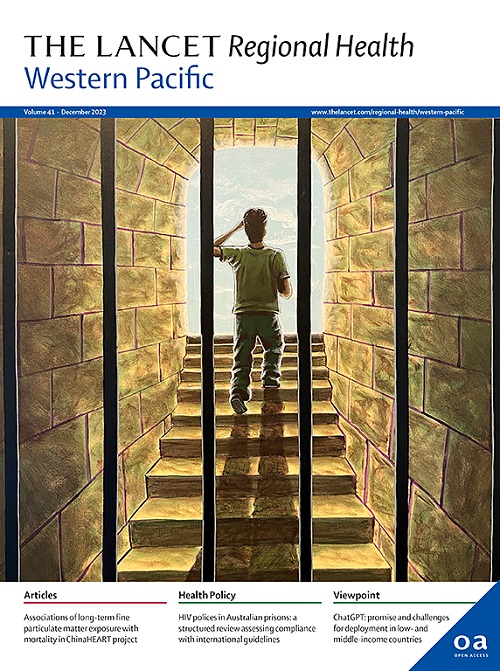Targeted lung cancer screening in the age of immunotherapies and targeted therapies – an economic evaluation for Australia
IF 7.6
1区 医学
Q1 HEALTH CARE SCIENCES & SERVICES
引用次数: 0
Abstract
Background
The cost-effectiveness of different lung cancer screening strategies has been evaluated from an Australian public health system perspective using static models. In addition, the impact of novel therapies, including immunotherapies and targeted therapies, on the cost-effectiveness of lung cancer screening has not yet been evaluated comprehensively. We evaluated the benefits, harms and cost-effectiveness of a targeted national lung screening program in Australia, accounting for the increasing uptake of novel therapies, which informed the lung cancer screening recommendations of the Australian Medical Services Advisory Committee (MSAC).
Methods
Australia-specific data on lung cancer epidemiology, smoking behaviour and care costs were used to adapt the MIcrosimulation SCreening ANalysis (MISCAN)-Lung model. Benefits, harms and cost-effectiveness of different targeted lung cancer screening scenarios were evaluated for individuals born between 1945 and 1969. The scenarios considered various screening age ranges, intervals and eligibility criteria (minimum accumulated smoking history and PLCOm2012 risk thresholds).
Findings
The MSAC-recommended scenario was cost-effective at AUD62,754 per quality-adjusted life-year compared to no screening. This scenario biennially screens current and former smokers (quit ≤10 years ago) who smoked ≥30 pack-years between ages 50 and 70, preventing 62 lung cancer deaths per 100,000 and yielding 8.4 quality-adjusted life-years per prevented lung cancer death. Using novel therapies reduced the incremental costs of screening compared to no-screening by 14.8% but yielded 11.3% fewer incremental quality-adjusted life-years compared to traditional anti-cancer therapies, due to the improved survival yielded by novel therapies. Overall, the cost-effectiveness of screening was better when costs and effects of novel therapies were applied (AUD62,754 vs AUD65,340 per quality-adjusted life-year gained; 4% difference).
Interpretation
Targeted lung cancer screening is more cost-effective when costs and effects of novel therapies are applied, although impacts on cost-effectiveness are likely to be marginal.
Funding
Cancer Australia.
免疫疗法和靶向疗法时代的肺癌定向筛查--澳大利亚的经济评估
背景从澳大利亚公共卫生系统的角度出发,采用静态模型对不同肺癌筛查策略的成本效益进行了评估。此外,新型疗法(包括免疫疗法和靶向疗法)对肺癌筛查成本效益的影响尚未得到全面评估。我们根据澳大利亚医疗服务咨询委员会(MSAC)提出的肺癌筛查建议,评估了澳大利亚有针对性的全国肺癌筛查计划的益处、危害和成本效益,并考虑到了新型疗法的不断增加。针对 1945 年至 1969 年出生的人群,对不同目标肺癌筛查方案的益处、危害和成本效益进行了评估。这些方案考虑了不同的筛查年龄范围、间隔和资格标准(最低累计吸烟史和 PLCOm2012 风险阈值)。研究结果与不进行筛查相比,MSAC 推荐的方案每质量调整生命年的成本效益为 62,754 澳元。该方案每两年筛查一次50至70岁之间吸烟≥30包年的现吸烟者和曾吸烟者(戒烟时间≤10年前),每10万人中可预防62例肺癌死亡,每预防1例肺癌死亡可获得8.4质量调整生命年。使用新型疗法与不进行筛查相比,筛查的增量成本降低了 14.8%,但与传统抗癌疗法相比,质量调整生命年的增量成本降低了 11.3%,原因是新型疗法提高了生存率。总体而言,在采用新型疗法的成本和效果时,筛查的成本效益更高(每获得质量调整生命年62,754澳元 vs 65,340澳元;相差4%)。释义在采用新型疗法的成本和效果时,有针对性的肺癌筛查更具成本效益,尽管对成本效益的影响可能微乎其微。
本文章由计算机程序翻译,如有差异,请以英文原文为准。
求助全文
约1分钟内获得全文
求助全文
来源期刊

The Lancet Regional Health: Western Pacific
Medicine-Pediatrics, Perinatology and Child Health
CiteScore
8.80
自引率
2.80%
发文量
305
审稿时长
11 weeks
期刊介绍:
The Lancet Regional Health – Western Pacific, a gold open access journal, is an integral part of The Lancet's global initiative advocating for healthcare quality and access worldwide. It aims to advance clinical practice and health policy in the Western Pacific region, contributing to enhanced health outcomes. The journal publishes high-quality original research shedding light on clinical practice and health policy in the region. It also includes reviews, commentaries, and opinion pieces covering diverse regional health topics, such as infectious diseases, non-communicable diseases, child and adolescent health, maternal and reproductive health, aging health, mental health, the health workforce and systems, and health policy.
 求助内容:
求助内容: 应助结果提醒方式:
应助结果提醒方式:


